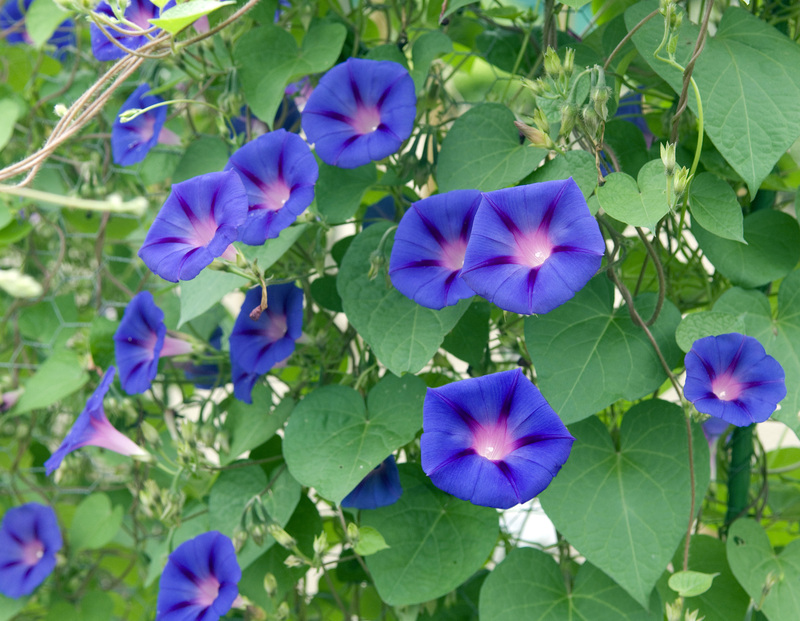Plant Combinations That Offer Beauty and Extra Privacy for Your Garden
Creating a beautiful and private outdoor space is a dream for many homeowners and gardening enthusiasts. Whether you're enjoying a morning coffee on your patio or hosting a gathering with friends, having a lush, secluded garden can add a sense of tranquility and elegance to your landscape. Plant combinations for beauty and privacy offer not just functional screening but also enhance the aesthetic appeal of your yard. In this comprehensive guide, learn how to choose the perfect plants and create stunning plant pairings that serve as effective natural barriers, all while making your garden a haven of visual delight.
Why Combine Plants for Privacy?
While traditional fences and walls can offer immediate privacy, they lack the charm and ecological benefits that living screens bring. Combining plants for garden privacy allows you to:
- Introduce Year-Round Beauty - Diverse plantings can provide color, texture, and movement throughout every season.
- Enhance Biodiversity - Mixed plantings can support pollinators, birds, and other beneficial wildlife.
- Increase Privacy with Depth - Layered plants can provide better coverage than a single row of shrubs or trees.
- Reduce Noise and Air Pollution - Dense foliage helps buffer sound and trap dust.
- Add Value to Your Property - Thoughtful landscaping increases curb appeal and overall property value.

Key Considerations for Creating Living Privacy Screens
Before selecting your plant pairings for beautiful garden privacy, consider the following essential factors:
- Sunlight Levels: Does your garden receive full sun, partial shade, or mostly shade? Select plants that thrive in your specific conditions.
- Soil Type and Drainage: Know your soil's texture and drainage to pick suitable companions.
- Desired Height and Width: How tall or dense do you want your privacy screen? Check mature sizes to ensure plants fit your space.
- Evergreen vs. Deciduous: Combine evergreens for year-round coverage with deciduous plants for seasonal interest.
- Maintenance Levels: Some combinations require more care than others. Choose according to how much time you wish to invest.
The Best Plant Combinations for Privacy and Visual Impact
1. Evergreen Shrubs and Flowering Perennials
Evergreen shrubs form the structural backbone of many privacy screens. When paired with colorful flowering perennials, they create a lush, layered look that's both eye-catching and effective at blocking views.
-
Boxwood (Buxus spp.) and Salvia
- Boxwoods provide dense, year-round greenery.
- Salvias bloom through summer, adding spikes of blue, purple, or pink.
-
Holly (Ilex spp.) and Coneflowers (Echinacea)
- Hollies offer glossy leaves and winter berries for extra interest.
- Coneflowers attract pollinators while providing a burst of color.
Tip: Layer perennials in front of your evergreens to soften the line and provide continuous blooms.
2. Ornamental Grasses and Tall Annuals
Blending ornamental grasses with tall annuals produces a dynamic, seasonal privacy screen. Grasses add movement and texture, while annuals fill gaps with brilliant color.
-
Miscanthus and Sunflowers
- Miscanthus varieties can reach over 6 feet, creating a swaying green wall.
- Sunflowers (Helianthus annuus) shoot up quickly and bloom profusely through summer and fall.
-
Panicum virgatum (Switchgrass) and Cosmos
- Switchgrass offers upright form and feathery flower heads.
- Cosmos provides clouds of bright, delicate blooms above feathery foliage.
Such combinations are ideal for properties needing fast-growing, seasonal privacy screens that also support wildlife.
3. Fast-Growing Trees with Understory Shrubs
Pairing fast-growing trees with shade-tolerant shrubs maximizes vertical interest and offers multi-level privacy.
-
Arborvitae (Thuja spp.) with Hydrangea
- Arborvitae is a classic for living fences, offering a dense, pyramidal habit.
- Hydrangeas thrive in dappled shade beneath trees and produce lush summer blooms.
-
Eastern Red Cedar with Azalea
- Red Cedars provide year-round cover and are drought-tolerant once established.
- Azaleas put on a showy spring display beneath their shelter.
Pro Tip: Create a staggered planting to give your garden dimension and a naturalistic, woodland feel.
4. Climbing Vines and Supportive Shrubs
Vines for privacy are perfect for adding vertical coverage and softening hard structures like fences or arbors. Mix them with sturdy, upright shrubs for a layered effect.
-
Clematis on Lilac Bushes
- Clematis offers large, vibrant flowers that can cascade over and through shrubs.
- Lilacs (Syringa vulgaris) add fragrance and body to the screen.
-
Honeysuckle on Privet Hedges
- Honeysuckle (Lonicera spp.) provides masses of honey-scented blooms.
- Privet forms a dense hedge to support the vines and maintain privacy.
This combination is especially beneficial for small gardens needing vertical solutions for privacy and beauty.
5. Native Plant Groupings for Sustainable Privacy
Using native plants for privacy ensures your screen is well-adapted to local conditions, reducing maintenance needs and supporting native wildlife.
-
Serviceberry (Amelanchier) with Switchgrass and Black-eyed Susans
- Serviceberry offers year-round interest: flowers in spring, berries in summer, brilliant fall color.
- Switchgrass (Panicum virgatum) creates a feathery mid-layer.
- Black-eyed Susans (Rudbeckia) fill the foreground with golden blooms.
-
Pacific Wax Myrtle with Oregon Grape and Sword Fern
- Pacific Wax Myrtle forms a dense, evergreen screen.
- Oregon Grape offers yellow flowers and blue berries.
- Sword Fern enhances the base layer with lush fronds.
Choosing native combinations maximizes ecological benefits while providing effective and sustainable privacy plantings.
Design Tips for Achieving Privacy and Beauty
Layering for Optimal Privacy
A single row of one type of plant often leaves gaps and can look monotonous. To ensure a full, natural appearance:
- Combine tall evergreens at the back for height.
- Add mid-sized flowering shrubs or grasses in front.
- Fill in with perennials or groundcovers for added color and texture.
Mixing Evergreen and Deciduous Choices
For year-round privacy with seasonal flair, blend evergreens for winter screening with deciduous plants that offer flowers or vibrant autumn color. Some stellar pairings include:
- Yew (Taxus baccata) with Forsythia: Deep green backdrop with a spring explosion of yellow blooms.
- Laurel (Prunus laurocerasus) with Japanese Maple: Evergreen strength with stunning fall foliage up front.
Using Color and Texture Strategically
Privacy doesn't just mean a green wall. Choose plants with contrasting foliage color - such as blue spruces with chartreuse spireas or purple ninebark with golden grasses - to add visual excitement. Incorporate both fine and broad-leafed plants for textural contrast.
Including Seasonal Interest
Aim for plant combinations with year-round appeal. Think evergreens for winter, spring bulbs along the screen's base, summer flowers, and autumn foliage for maximum impact.
Low-Maintenance Plant Combinations for Easy Care
Achieving privacy doesn't have to mean hours of pruning and watering. The following combos are known for their resilience and minimal upkeep:
- Photinia and Juniper: Both are drought-tolerant and require little attention, Photinia's red new leaves add seasonal color.
- Pyracantha (Firethorn) and Boxwood: Adapts to a variety of soils and adds berries for winter wildlife.
- Bamboo and Hostas: Choose clumping bamboo for non-invasive growth, with hostas for shade-loving groundcover.

Frequently Asked Questions About Privacy with Plants
What are the fastest-growing privacy plants?
- Bamboo (specifically clumping varieties for non-invasiveness)
- Arborvitae ('Green Giant' is a popular fast-growing cultivar)
- Privet
- Pyracantha
How close should I plant for effective privacy?
Spacing depends on the species and your desired level of coverage. Always check mature widths. In general, staggered double rows or mixed-height layers work best for dense screens without crowding roots and branches.
What should I avoid when planting for privacy?
- Avoid monocultures: Relying on a single species increases susceptibility to pests and diseases.
- Invasive species: Always check that your choices aren't invasive in your region (e.g., some bamboos, English ivy).
- Neglecting maintenance: Even low-maintenance screens benefit from occasional pruning and care.
How can I make my privacy planting also wildlife-friendly?
Choose native plants, include berry-producing species, add flowers for pollinators, and include a water source nearby. Provide layers and some brushy areas for birds to nest and hide.
Conclusion: Achieve a Private and Beautiful Oasis with Smart Plant Combinations
Crafting a garden privacy screen that's both practical and stunning is an opportunity to express your creativity and connect with nature. By blending evergreens with flowering perennials, grasses with annuals, trees with shrubs, and climbers with hedges, you can create a dynamic, multi-season tapestry that gives you the privacy you want without sacrificing beauty.
Plan your living privacy screens by considering growth habits, maintenance needs, and the visual progression through the seasons. With thoughtful combinations and layers, your garden will become a cherished, private retreat, full of color, wildlife, and year-round interest.
Ready to transform your garden with the best plant combinations for privacy and aesthetics? Start by mapping out your space, researching your region's ideal species, and layering your favorites for an unmatched, natural garden sanctuary.
- Get started this season and enjoy a more beautiful, secluded garden for years to come!